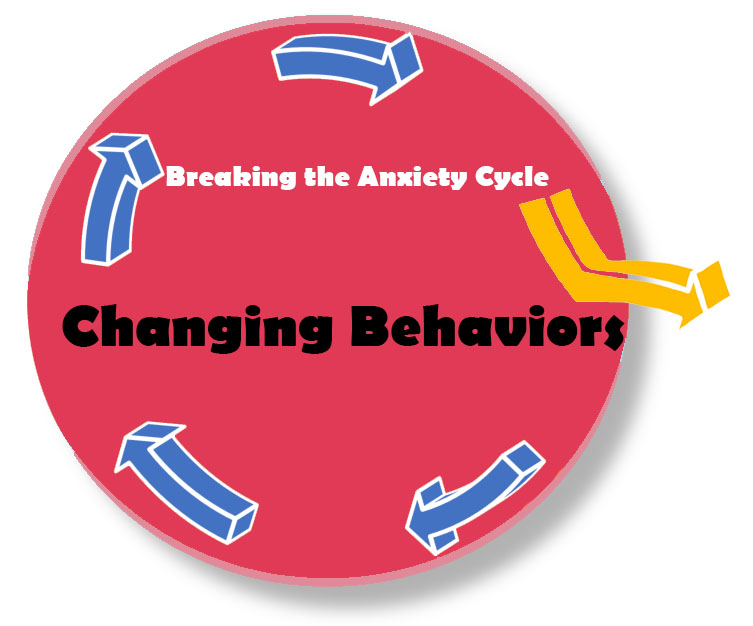Changing behaviors is all about noticing what you tend to do in anxiety provoking situations and learning to do something different. The more you can learn to tolerate anxiety provoking situations without avoiding or running from them, the less anxious you’ll be.
Think of it this way, every time you engage in avoidance, you confirm that the situation was as dangerous as you predicted. If you stay at a party that makes you anxious and end up having a good time, you’re proving to yourself that it was not as awful as you expected. The more times your predicted catastrophe does not occur, the more proof you have that the situation you encountered was not dangerous.
STEP 1: NOTICE YOUR BEHAVIORS
- Overt avoidance is actually avoiding the situation, you do not go to the party, you do not drive a car, you do not walk on bridges.
- Covert avoidance is concealed avoidance. You may be physically present in an anxiety providing situation, but you don’t fully engage in it. A lot of us engage in covert avoidance, but it may be hard to recognize since behaviors are more hidden. You want to look for things like, distracting yourself, searching for an exit, avoiding eye-contact, or fidgeting in a certain way. Something as simple as tensing your body sends a signal to your brain saying “yes, this situation is dangerous, I need to be on high alert”.
Let’s take the example of going to a party. You are extremely nervous about going to a party because you’re afraid that everyone is going to think that you’re boring and awkward.
Typical Behaviors:
- Overt avoidance: don’t go to the party because you know what you predict will come true
- Covert avoidance: Go to the party, look at your phone the whole time, while having an inner dialogue about how lame you are and why no one would want to talk to you, leave upset.
Did you know these two behaviors provide the same result? They’re both forms of behavioral avoidance. Avoidance confirms that a situation is so dangerous that you need to do something to prevent a negative outcome from coming true (someone talking to you and realizing that you’re boring and awkward). In the overt avoidance scenario you don’t allow yourself to be in the situation where people would think you’re boring and awkward. In the covert avoidance scenario you are making yourself unavailable to other people by acting disinterested or uninvolved in the party, which makes it unlikely that people will talk to you at all.
STEP 2: Change your expectations about the situation and yourself
Original Expectations: No one will talk to me and if they do they’ll know that I’m boring and awkward. I’m going to leave upset like always.
New Expectations: The party will have people I don’t know. I don’t need to talk to everyone there I’d enjoy saying hello to these three people (name them). It’ll be a successful party if I am able to _________ (introduce myself to one new person, enjoy the music, don’t drink excessively to make up for my anxiety, stay at least 45 minutes).
STEP 3: Engage in the anxiety provoking situation while being truly present
This is where you notice your covert avoidance (tensing, standing in the corner, walking from room to room as if you’re looking for someone). If you know what your covert avoidance tends to be, do something different, or better yet, do the opposite. If you tend to avoid eye contact, you can look someone in the eyes (without the self-critical avoidance saying “this is so awkward”). Doing the opposite sends a mixed signal to your brain about the danger of the situation. You wouldn’t make eye contact if this were dangerous, right? So the situation must not be dangerous.
STEP 4: Do it again, and again…
The more times you do it, the more you confirm that a situation is not as dangerous as you thought. The more evidence you have that a given behavior or scenario isn’t dangerous, the less reactive or anxious you’ll be.

